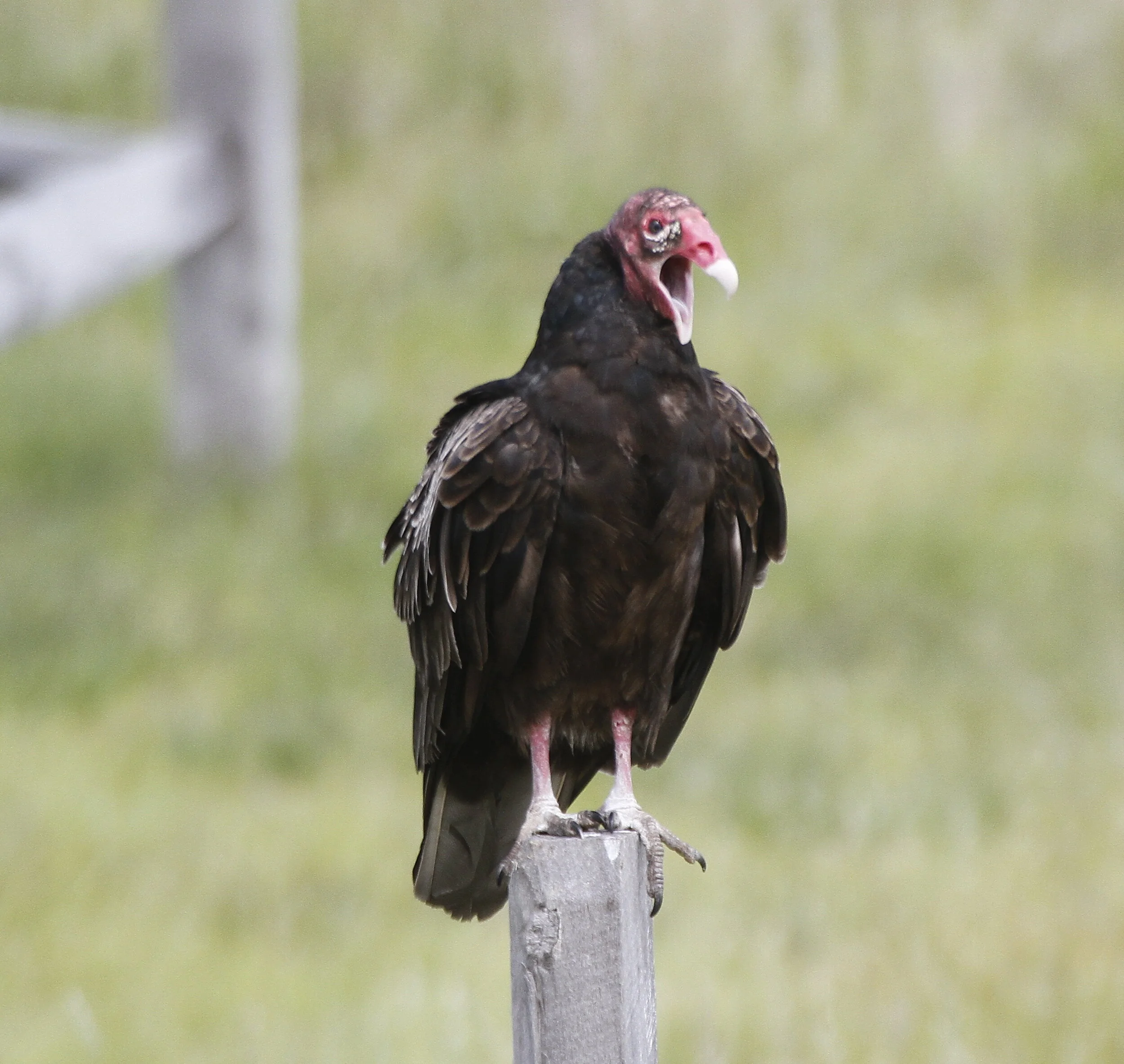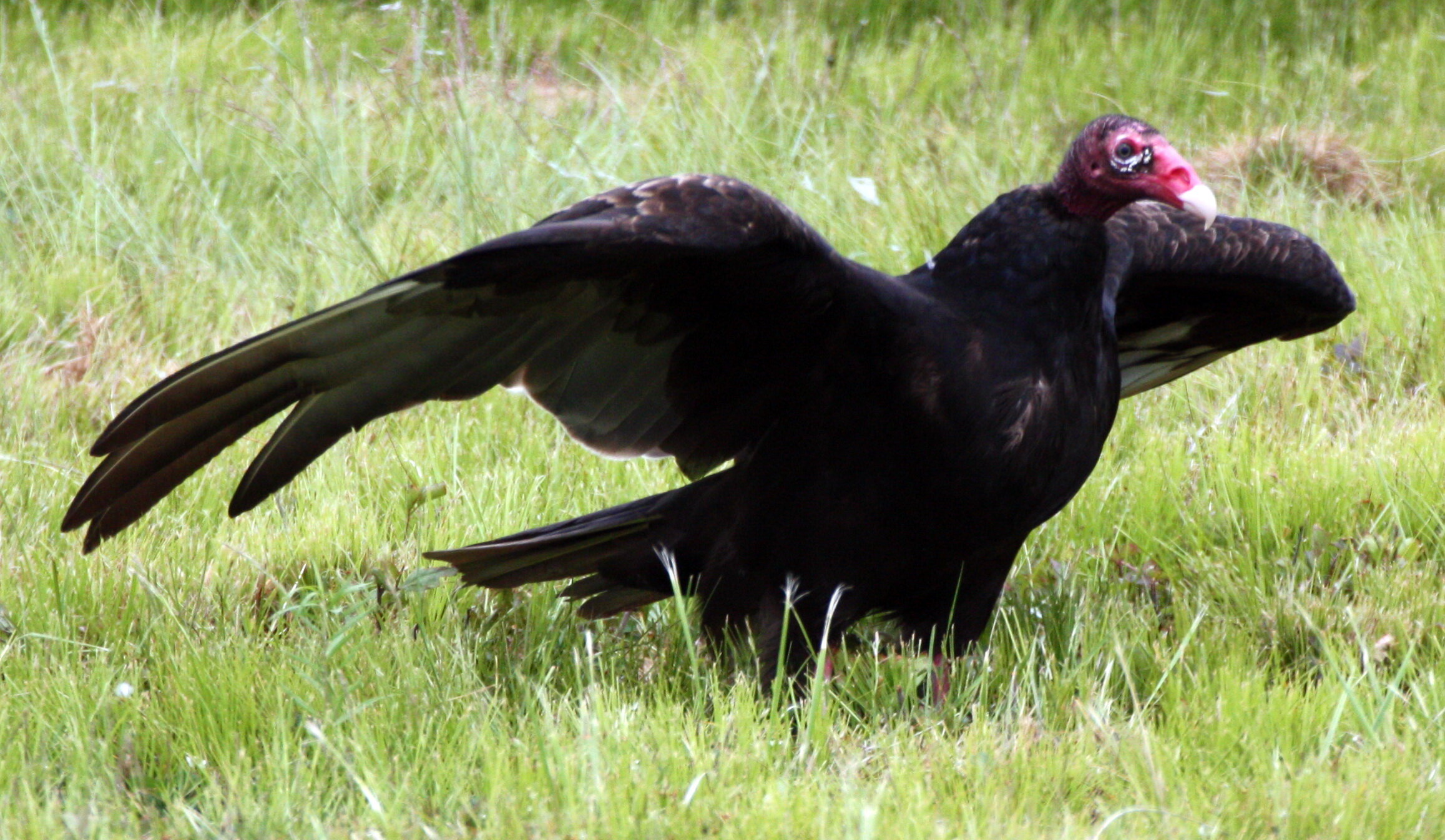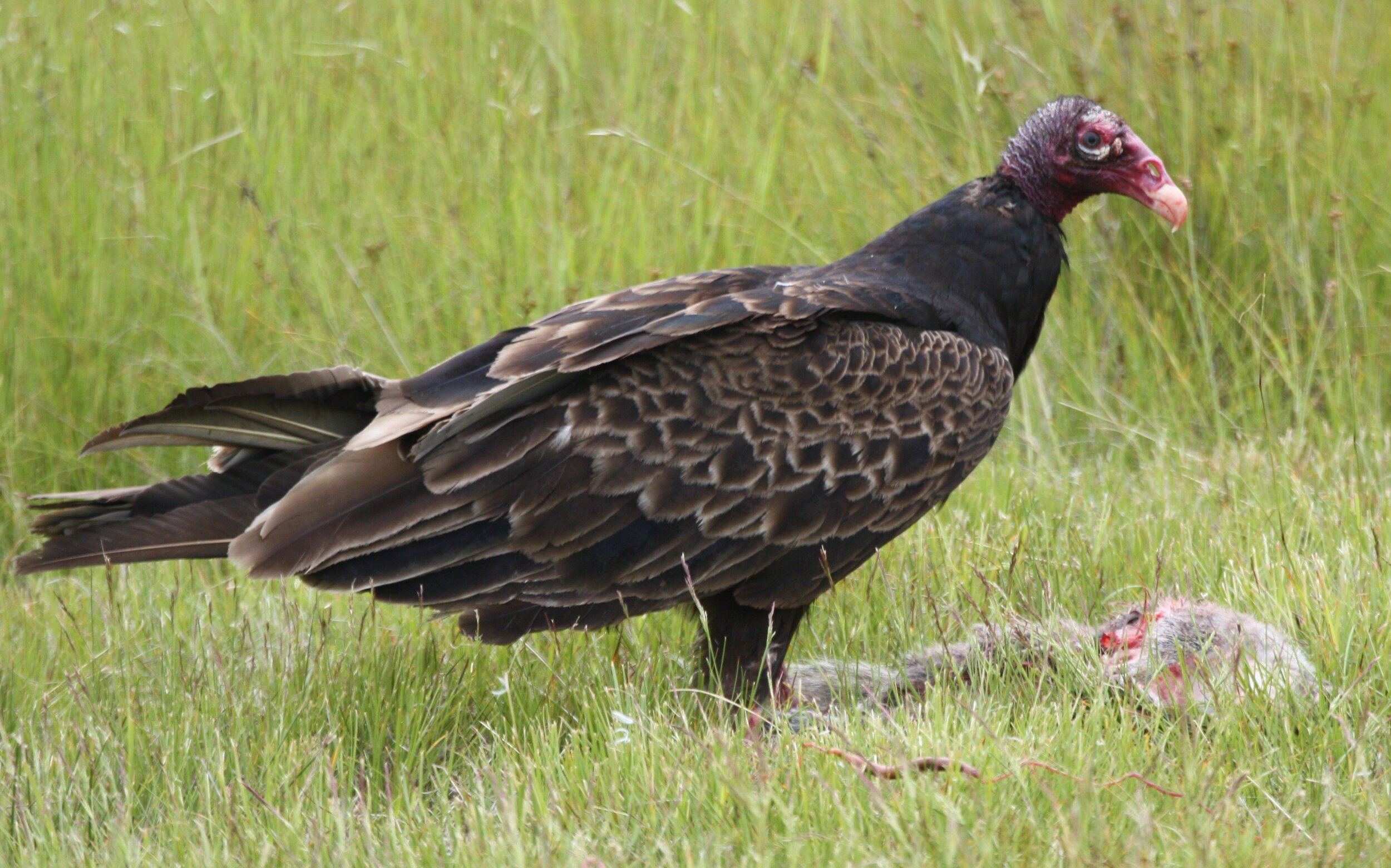Vultures on the Rise in your Neighborhood? No Need to Move Out!
A seemingly peculiar but increasingly common event has been playing out around the island over the past few months, with large numbers of vultures congregating in trees and on rooftops. Here at the Linda Loring Nature Foundation, we have been asked questions such as, ‘why are these birds on top of my house when they never were before’, ‘why are they being observed in such high numbers’, and ‘are they negatively impacting other species’?
The particular bird in question is the Turkey Vulture (Cathartes aura). Turkey Vultures are large scavenger birds (wingspan of 5 – 6ft, length of 2 – 2.5ft, and weight of 2 – 5lbs). They feed on carrion, which are the decaying carcasses of dead animals. Although, many people associate them with being ugly or gross, their feeding habits actually greatly benefit human populations. They serve as ‘Nature’s Clean-up Crew’, disposing of roadkill and other carcasses, that would otherwise attract bacteria and insects, smell rotten, and potentially even spread disease.
Although many bird species are evolutionarily specialized, the Turkey Vulture has adapted over time to being highly successful at filling the unique scavenger niche. Unlike most other birds, vultures have featherless heads. This adaptation allows them to put their heads into decaying carcasses without lots of nasty viruses and bacteria getting stuck to their feathers. The bald skin is also much easier to clean than a feathered head would be, a necessity when feeding on decaying flesh. They also have an excellent sense of smell (rare among birds) allowing them to locate carrion that is as much as a mile away.
Apart from specialized feeding, Turkey Vultures have a few other adaptations that contribute to their status as an ‘unloved’ species. In the summer they regulate their body temperature by urinating and defecating on their own legs, their main defense mechanism is projectile vomiting, and instead of building a nest they place their eggs in remote locations such as the rotting bases of stumps, inside old barns, rock crevices, or in discarded trash heaps. They also lack a syrinx (the vocal organ of birds) so their vocalizations are limited to low hisses or grunts.
So, what are they doing on your roof? Although there are several possible explanations, it is important to know that seeing groups of perched vultures (called a wake) is completely natural and that they pose no harm to the environment. Wakes may start as just a few birds, but over time may grow to tens or even hundreds, as vultures are known to be a gregarious species. There is also no long-term evidence that vultures displace other birds. Although they may seem menacing or aesthetically unappealing, as previously mentioned, vultures actually improve your neighborhood by cleaning up dead animals.
There are both short-term and long-term explanations as to why you may be seeing more vultures. The most likely short-term possibility is that there are animal carcasses somewhere in close proximity to your house. You may not be able to smell or see them but being specially adapted, vultures are able to.
The other short-term explanation is that a wake of vultures has decided that your roof and/or the treetops in the surrounding area is an appropriate roost site. A ‘roost’ is a place where birds regularly congregate to rest at night. If you are seeing groups of vultures primarily around dusk and dawn, then this is a likely explanation. The exact characteristics that comprise a successful roost site for vultures are still somewhat unknown, but in general roosts are well-protected areas with adequate space for resting and sleeping. Off-island, vultures are known to roost on radio transmission towers, so the tops of houses or trees seem like feasible locations as well.
In the long-term, climate change is a major factor for why we are seeing more vultures on island. Interestingly, Turkey Vultures are common throughout most of New England but were first observed on Nantucket only 20 years ago. Small changes in atmospheric temperature have allowed many bird species to expand their range. Vultures were first sighted here in low numbers but over the last two decades, have become residents and have greatly increased their population numbers. There is reasonable expectation that they are breeding here as well, although no confirmed nesting sites have been found on Nantucket. One nesting site was discovered on Tuckernuck and it is likely that others could be found on Nantucket itself, but due to their cryptic nature, the nesting sites are hard to locate. Due to the increasing populations, we may be reaching a point where evidence of this growth is starting to be seen visually, for instance large wakes of perched birds or kettles (what vultures are called in flight) being seen overhead in the winter. As a slight aside, the other common vulture species in the USA, the Black Vulture (Coragyps atratus) has been recorded expanding its range in the last decade. Black Vultures were originally found in the tropics, with meaningful populations in the USA stretching only into Florida and the Deep South. However, these days, Black Vultures are found throughout the Mid-Atlantic and even in New England, and will likely start to show up on Nantucket in the next few decades.
The other reasonable long-term explanation for increased vulture sightings is due to the effects that humans have on the environment. Increased human density on Nantucket has benefited vultures. More humans, means more cars, and more cars mean more roadkill, which provides additional food sources to these birds. Additionally, Turkey Vultures thrive in fragmented habitats. Although Nantucket has done an excellent job overall at environmental conservation, increased building intensity further fragments parcels of land. In general, many of the features that humans enjoy about developed areas are the same that vultures do, paved roads, a warm microclimate, and lots of open space. Other human elements such as landfills or dumpsters may provide additional food sources to vultures as well. These anthropogenic features offer vultures ample feeding and roosting opportunities, which is one reason why you may be seeing these birds close to your home.
But likely, it is some combination of all of these factors that are driving wakes of vultures to specific areas. Unfortunately, vultures tend to be an understudied species, but scientists do know that roost sites tend to be temporary. Often times vultures will linger in certain areas during specific months or seasons before ‘vanishing’ and leaving to roost somewhere else, that perhaps has better cover or food. Although there may not be one specific explanation for the group of 50+ vultures you’re seeing in your neighborhood, we suggest not to fret. These birds are an important piece of the natural environment, likely won’t remain in your neighborhood forever, and help humans by stopping the spread of disease.
Written by Seth Engelbourg, Photos by E. Vernon Laux



